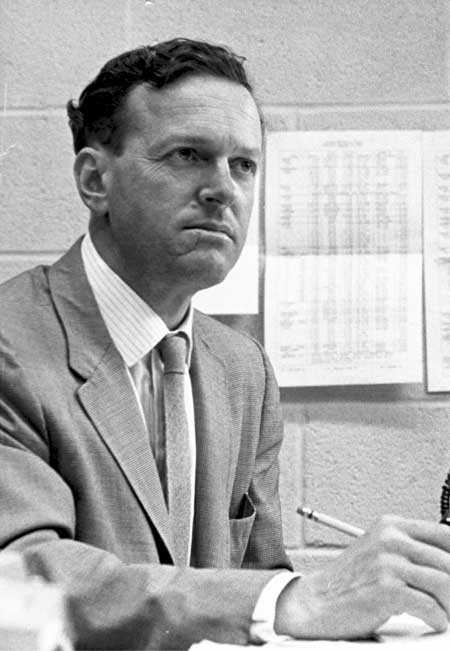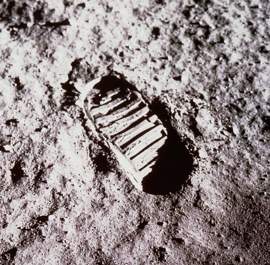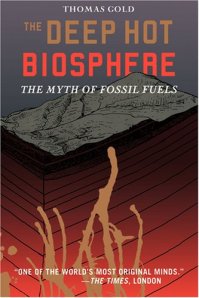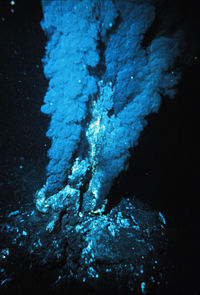I wrote rather passionately about J. Robert Oppenheimer in one part of a previous post marking an anniversary of the first nuclear bombings. Those interested in Oppenheimer’s life might be interested in reading that part.
I read American Prometheus: The Triumph and Tragedy of J. Robert Oppenheimer (Buy it) by Kai Bird and Martin Sherwin between 14-29 October. And it is amongst the best biographies I have read. It is a very different book, it is not inspiring like some biographies on great men are. It is not philosophical or based on some mad pursuit. I have never seen such a well researched biography before. Sometimes I found the details about Oppenheimer’s personal life nauseating, but that just indicates the amount of surveillance he was under.
This book is not inspiring, it is haunting*.
[American Prometheus- Kai Bird, Martin Sherwin. Image Source ]
A Pulitzer prize winner (2006), this book chronicles the life of physicist, administrator, poet, American patriot and the father of the atomic bomb from his very early days to his last. The authors delve into every aspect of Oppenheimer’s life from his birth, to his time in England and Germany as a student. His leftist days at Berkeley, his love interests, his role in the Manhattan project, his public humiliation in the security hearings of 1954 at the height of the red scare and his quiet life after that, till his death. Twenty five years of research by the authors culminated into a devastatingly sad biography of one of the most famous men of all time.
The prologue in the book quotes George Kennan (1904-2005) the famous American diplomat now known as the father of the containment policy during the red scare as saying the following about him:
“In the dark day of the early fifties, when troubles crowded in upon him from many sides and when he found himself harassed by his position at the center of controversy, I drew his attention to the fact that he would be welcomed in a hundred academic centers abroad and asked him whether he had not thought of taking academic residence outside this country. His answer, given to me with tears in his eyes: ‘Damn it, I happen to love this country’“
The book is divided into 5 parts and 40 chapters, each part covering a stage in his life. I would request all who get the opportunity to read this book, even those who have personal enmity with science and scientists but read once in a while about general things.
Some sections of the book are striking and stunning and represent major turning points in the book and just stand out.
—
While reading I observed that the authors place very clearly facts about the “Apple Incident” in which I was interested ever since I read about it, where in a state of depression and enormous emotional distress in his troubled student days at Cambridge, England in the autumn of 1925 Oppenheimer placed a “poisoned” apple on the desk of his head tutor, Patrick Blackett (few people know that Blackett was an adviser to Jawaharlal Nehru). The authorities learned of the incident and after some talking with his parents he was allowed to stay at Cambridge subject to the condition that he visit the psychiatrist as per a mandated chart. Oppenheimer gradually recovered and thrived in his golden intellectual days at Gottingen, Germany shortly afterwards when he produced some fundamental research and became known as one of the best quantum physicists of the time. The time bracket from this period at gottingen to his days as the Director of the Manhattan Project were his best days. By the end of 1945 Oppenheimer was one of the most famous physicists of the time.
[The above photo of Oppenheimer’s porkpie hat was the cover of Physics Today in May 1948, exemplifying the high regard and respect Oppenheimer commanded at that time. Image Soure]
—
Taking a brief digression, I’d cite two of my favorite quotes from the book:
After the emotional turmoil of his student days in England, Oppenheimer was always trying to be above that. His guiding principles were discipline and work. Quoting him from a letter to his brother.
Discipline is good for the soul is more fundamental than any of the grounds given for its goodness. I believe that through discipline, though not through discipline alone, we can achieve serenity, and a certain small but precious measure of freedom from the accidents of incarnation…I believe that through discipline we learn to preserve what is essential to our happiness in more and more adverse circumstances, and to abandon with simplicity what would else have seemed to us indispensable.
There is another fantastic quote attributed to P.A.M Dirac, the legendary physicist who was known to be eccentrically single minded to his dedication of science. Once Oppenheimer gave him several books as a gift. Dirac politely refused and remarked:
Reading books interfered with thought.
—
The Beast In the Jungle: I mentioned just a paragraph earlier that there were some very strong parts in the book that represented a watershed in his life. Some of them were just stunning. Like this part named “The Beast In the Jungle“. Until this section of the book Oppenheimer had been doing fine even though the number of his enemies were increasing. It was after this chapter that his decline began or rather accelerated.
The authors mention that Oppenheimer had harbored a vague sort of a premonition that something dark was in store for him in the future for a while. In the late 40s he read a novella by Henry James written in 1903 titled “The Beast in the Jungle“. James’ story was one of obsession, tormented egotism and as the authors put it, of existential foreboding. The story is very short, I have placed a link below to read the book from, for those interested. I could finish it under a couple of hours only. The basic plot of this story is as (from wikipedia):
John Marcher, the protagonist, is reacquainted with May Bartram, a woman he knew ten years earlier, who remembers his odd secret: Marcher is seized with the belief that his life is to be defined by some catastrophic or spectacular event, lying in wait for him like a “beast in the jungle.” May decides to buy a house in London with the money she got from her Great-Aunt who passed away, and to spend her days with Marcher curiously awaiting what fate has in store for him. Marcher is a hopeless egoist, who believes that he is precluded from marrying so that he does not subject his wife to his “spectacular fate”.
He takes May to the theatre and invites her to an occasional dinner, but does not allow her to get close to him. As he sits idly by and allows the best years of his life to pass, he takes May down as well, until the denouement where he learns that the great misfortune of his life was to throw it away, and to ignore the love of a good woman, based upon his preposterous sense of foreboding.
Oppenheimer was struck by the charge of the story and asked his friend Herb Marks to read it. After the bombings of Hiroshima and Nagasaki, as the authors write citing evidence Oppenheimer lived with a similar feelings that someday he would be struck by his “beast in the jungle” which would alter his whole life. Oppenheimer knew he was kept track of and that people in the Govt and the intelligence were looking for evidence to destroy him. As it turned out, his beast in the jungle was Lewis Strauss, who destroyed him.
Einstein and Oppenheimer: The parts on Einstein in the book were interesting.
 [Einstein and Oppenheimer at IAS: Image source]
[Einstein and Oppenheimer at IAS: Image source]
The book mentions Einstein in numerous instances throughout. However the ones related to Oppenheimer are the ones that I intend to touch upon.
Einstein could not understand why Oppenheimer was so keen on maintaining access to Washington and the echelons of the government. Einstein by instinct disliked politicians, and figures of authority. I quoted him in one previous post on this:
To punish me for my contempt of authority, fate made me an authority myself.
Einstein was always uncomfortable with attention is a well known fact to all those who admire him. There was this unforgettable quote in the book by him. On Einstein’s 71st birthday, Oppenheimer was walking him to his residence and Einstein said:
You know, when it’s once been given to a man to do something sensible, afterward life is a little strange.
Einstein suggested to Oppenheimer that he resign just taking into account the sheer outrageousness of the attacks on him. Einstein had left Germany when the Nazi nationalist frenzy swept the country and never set his foot on Germany again. He believed that the rise of McCarthyism in America was alarming, and he thought that Oppenheimer would end up humiliating himself.
As the authors note that Einstein’s instincts were right. He confided to a friend:
Oppenheimer is not a gypsy like me, I was born with the skin of an Elephant; there is no one who can hurt me.
and he thought that Oppenheimer was the reverse.
I would once again suggest the book to everyone who can set his/her hands on it. I would also congratulate the authors for the extremely gripping and compelling biography, it is amazing to think that the authors could piece together research spread over 25 years in such a wonderful way and I am already not able to get myself to complete a 60 page report on a project based on Support Vector Machines, in which I don’t even have to “piece together” things.
* This line is in no way borrowed from, or inspired by the newsweek review on this book.
—
Links:
1. American Prometheus: The Triumph and Tragedy of J. Robert Oppenheimer – Kai Bird and Martin Sherwin
2. The Beast in the Jungle – Henry James (Download it from Project Gutenberg)
—



















